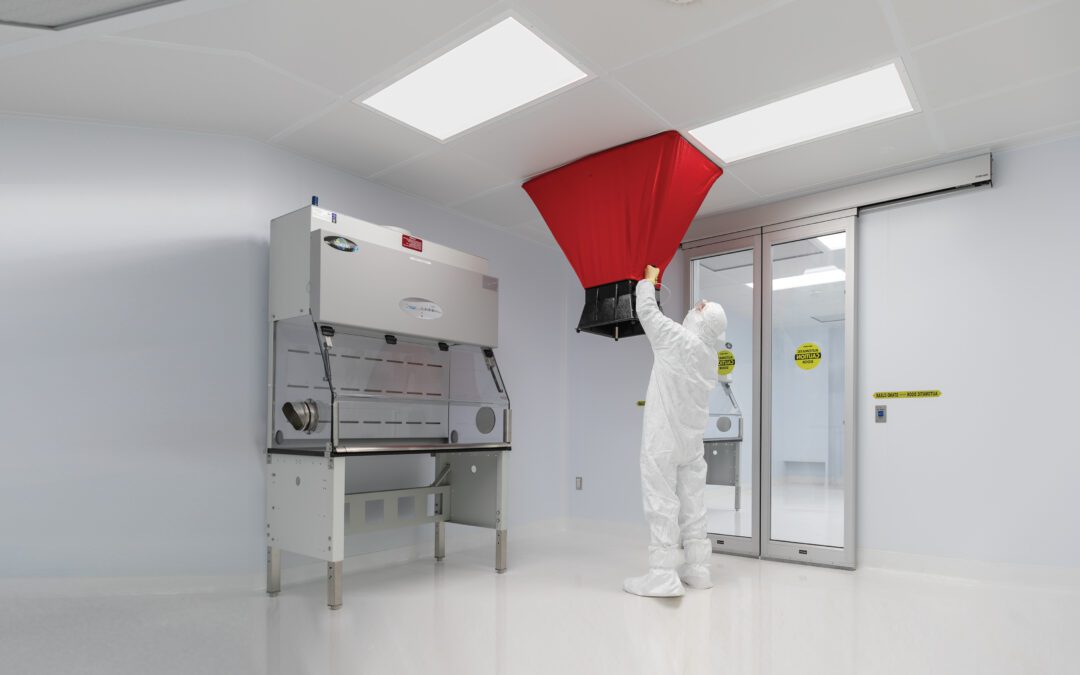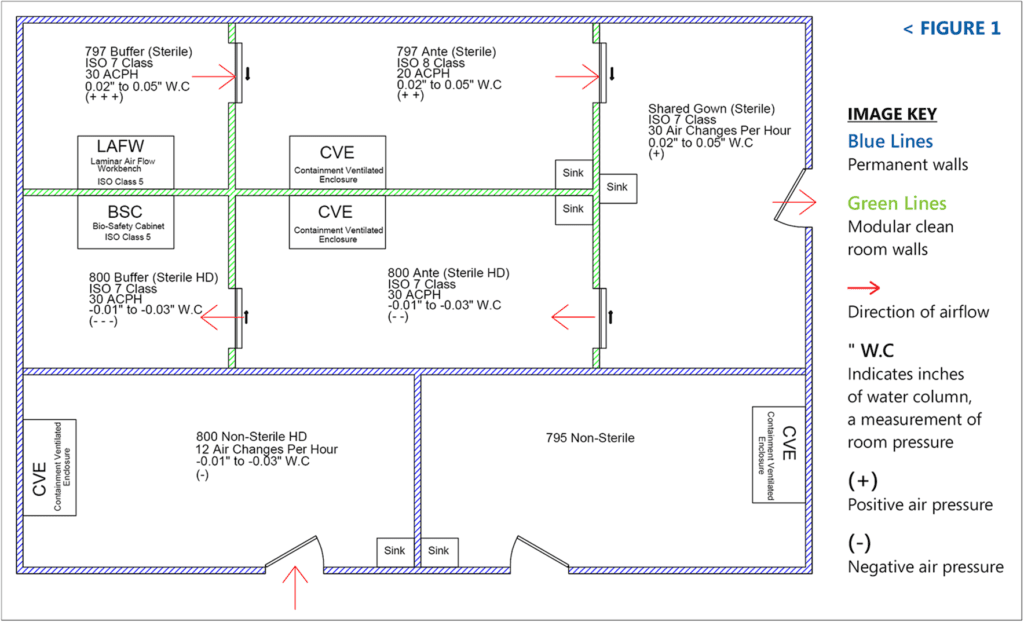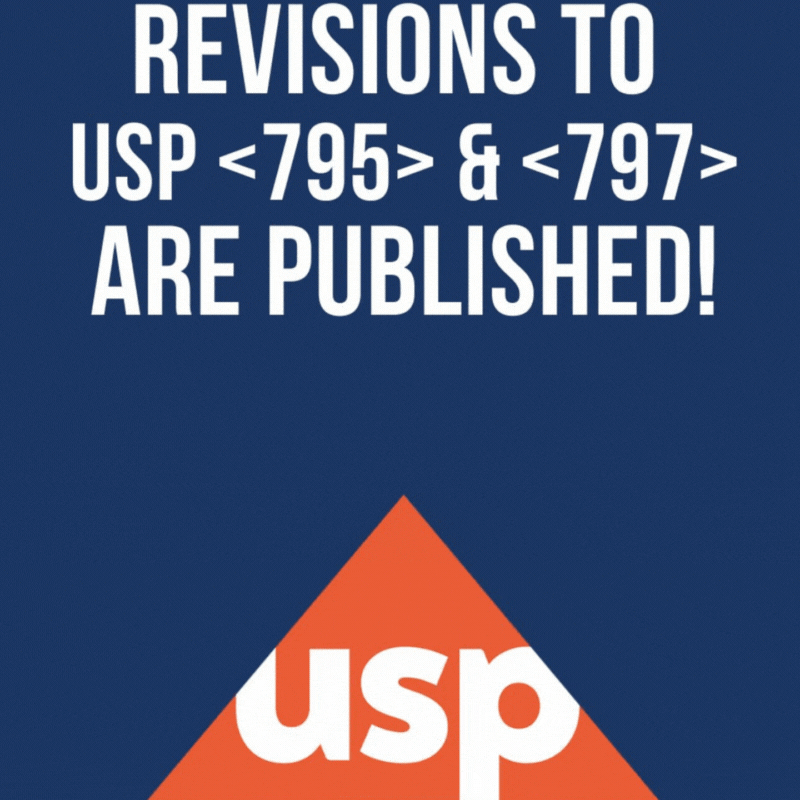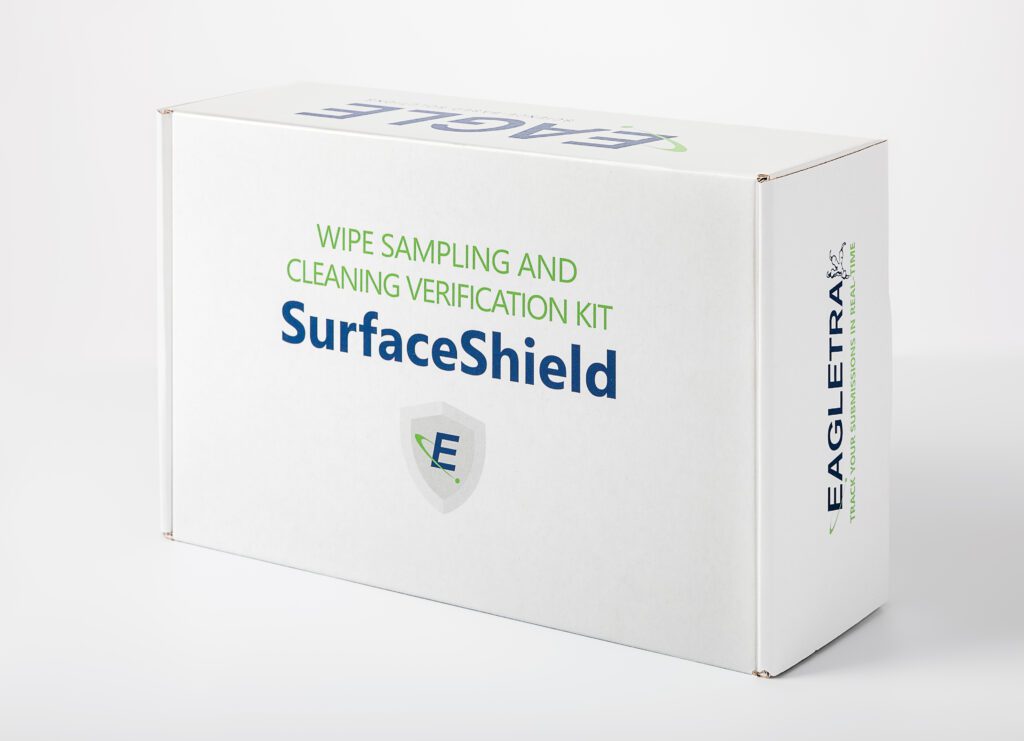When designing a cleanroom, there are many aspects to take into consideration. While regulations and guidelines such as USP chapters outline the minimum requirements for cleanroom design, they do not address all important elements. Many compounding pharmacies use the requirements stated in USP chapters <797> and <800> as the template for designing their cleanroom—often at the expense of a workflow that is operationally efficient and designed to minimize contamination risk. To help compounding pharmacies stay compliant and reduce risk without sacrificing efficiency, here are some of the aspects to consider when designing a clean room, as well as some recommendations that we at Eagle consider best practices.
Three-Room Design
The fundamental purpose of a cleanroom is to minimize the risk of contamination of compounded sterile preparations. In order to best achieve this goal, design considerations should address the number of personnel, the movements of personnel and supplies, and the activities that need to be performed in the classified areas. When all of these considerations are taken into account, best practices for cleanroom design often become more involved than the minimum requirements prescribed by USP regulations.
For example, while USP <797> only requires an ISO 7 buffer room adjacent to an ISO 8 anteroom, many pharmacies do not consider the amount of space they will need for all activities and equipment in this area. Therefore, cleanrooms don’t always have sufficient space for pre-sterilization activities, such as weighing non-sterile powders, or for the placement of equipment, such as autoclaves, convection ovens, and powder-containment enclosures. We typically recommend using a three-room design, which allows the segregation of aseptic processing, pre-sterilization procedures, and handwashing and gowning activities.
When employing a three-room design, we typically recommend a buffer area and two anterooms. The anteroom that is adjacent to unclassified areas serves as a gowning room, should contain a sink for handwashing, and should be a positive-pressure ISO 7 or 8 area. This room can be shared between hazardous and non-hazardous cleanroom suites, though if it is shared with the hazardous suite, it must meet the ISO 7 classification. The second anteroom can be used for prep, such as weighing powders and sterilization or depyrogenation of supplies and compounded sterile preparations.
Finally, there is the ISO 7 buffer area that contains the ISO 5 primary engineering control, such as a laminar-airflow workstation. This room should be adequate in size to accommodate the size of the primary engineering control. It is important to carefully consider the placement of equipment and supplies in this area as well, as the impact that they have on the ISO classification and on the HEPA-filtered airflow supplied by the primary engineering control. You can see an example of a three-room design in Figure 1 below.
Negative and Positive-Pressure Areas
When designing a cleanroom suite that meets USP <800> requirements for handling hazardous drugs, it is especially important to consider the activities that personnel will perform in these areas. USP <800> requires a negative pressure ISO 7 buffer room that is adjacent to a positive pressure ISO 7 ante area. Since the buffer room will maintain negative pressure relative to the anteroom, the anteroom must maintain ISO 7 air quality to prevent the influx of lower-quality air into the buffer room. Similarly, the anteroom must be positive pressure relative to adjacent, unclassified areas in order to prevent the influx of lesser quality air into the sterile suite.
However, pharmacies must also consider where they will perform pre-sterilization weighing of hazardous APIs. Personnel must handle hazardous drugs under negative pressure, so we strongly recommend a second anteroom that is under negative pressure and has a containment primary engineering control, such as a powder-containment enclosure, that can be used for weighing non-sterile ingredients. This design results in an ISO 7 buffer room that is negative pressure relative to the adjacent ISO 7 prep area, which is negative pressure relative to the ISO 7 gowning room, which is positive pressure relative to unclassified areas. Figure 1 below shows an example of this.
Figure 1. An example of a cleanroom suite that uses a three-room design with appropriate negative- and positive-pressure areas.
Maintaining Sanitary Conditions
The USP chapters also do not address all design considerations that are discussed in the FDA guidance document “Insanitary Conditions at Compounding Facilities.” This guidance document describes conditions—including cleanroom design elements—observed at compounding facilities that the FDA considers to be insanitary. Regardless of whether a facility qualifies for 503A or 503B exemptions from federal requirements, if they prepare compounded drugs under conditions that the FDA considers insanitary, then the compounded drugs are considered adulterated, and the facility may be subjected to regulatory actions or asked to recall their products.
Some of the insanitary conditions discussed in the FDA document that relate to cleanroom design are as follows:
- Unsealed or loose ceiling tiles
- Buffer rooms that contain ledges or overhangs that may collect dust
- Water sources (sinks or drains) in buffer rooms, or floor drains in anterooms
- Equipment that is in close proximity to the ISO 5 primary engineering control and may affect airflow
- Personnel gowning in unclassified areas
- Inadequate pressure differentials between areas of higher and lower-quality air
- HEPA filters that are not sealed around their perimeters
- HEPA air returns that are on the ceiling or located near the HEPA filter instead of near the floor
- Production areas that are difficult to clean (e.g., equipment that is difficult to move or clean around, or that is particle-generating, or construction materials and surfaces that are porous, shedding, or not easily cleanable)
These are just a few of the aspects that compounders should consider when designing a cleanroom facility. If you have any questions about cleanroom design, the Eagle engineering team can provide a range of consulting services. Please feel free to contact us at 800.745.8916.
- Eagle New Year Party & Eagle Employee Of The Year Award Ceremony, 01/13 - March 11, 2024
- HRT Functional Medicine Symposium, 02/15 – 02/17 - March 11, 2024
- APhA, 03/22 – 03/25 - March 11, 2024






